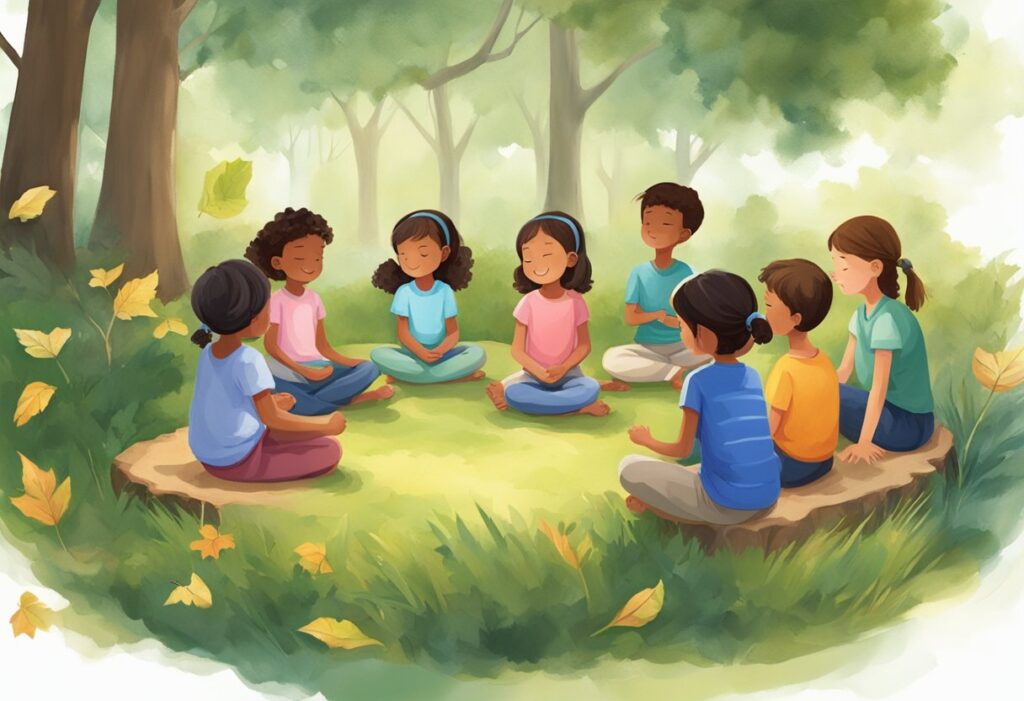
Guided Meditation/Visualization by Amanda McFaul
Here at CCB, I have been using Guided Meditation/Visualization for most of my nine years. Despite my mother using the ‘Body Scan’ visualization with me as a young child who had suffered with debilitating migraines, practicing yoga beginning in college and well into my 30s, it was actually a CCB family that introduced me to the book that I have replaced and gifted more than almost any other time in my career, Starbright by Maureen Garth.
A lifelong reader and naturally self-reflective person, I began putting the meditations and visualizations from Maureen’s book into practice immediately. Humans are storytellers by instinct, by necessity and guided mediation is, to me, what most early stories must have been, a way to understand our bodies, our environment and the connection between those and the other humans in our circles. Early stories told children how to survive, what was safe to eat, why the natural environment did what it did, what to avoid, and how to behave.
Along with researchers and educational thinkers, we as teachers are realizing the damage of the Covid-19 Pandemic inflicted on our children. Studies, although few in scope, have alerted us to a troubling realization that many children are worse off since the pandemic. Social development and early language acquisition decreased due to an increase usage of screen time by caregivers. Developmental delays and behavioral disorders increased as children’s educational and social needs were not being met by attending school online, even preschool, through a computer screen.
Children who are now turning 4 and 5 are becoming qualified for services that they would have gotten earlier if they were in childcare settings before the pandemic. Emotional regulation and ability to co-regulate is trending downward, and many of us who are at the front of the Early Childhood field are having difficulty meeting the emotional needs of children as we deal with our collective trauma. Some children are quicker to frustration and attention spans overall are lessening.
Post-Pandemic, I leaned into meditation more, with myself as I began navigating a world and new procedures that were supposed to be safer for myself and my community while simultaneously activating my trauma response, and with the children in my care. And they responded, with closed eyes, rapt attention, deep untroubled breathing.
Although most of our research about meditation and its effectiveness primarily deals with the adult population, the limited research about meditation and children has thus far shown positive results. As meditation in adults is shown to lower blood pressure, decrease cortisol and stress levels, lead to better sleep, lower pain, enhance emotional regulation among other benefits, the benefits for young children are similar.
The Benefits of Guided Meditation for Kids
The benefits of meditation are numerous – both at home and in the classroom. And good habits early on can lead to a lifetime of well-being. Meditation can:
- improve a child’s positive thinking, happiness, and empathy
- help reduce pain and headaches
- improve self-esteem and active listening skills
- help children fall asleep faster, and improve sleep quality
- lower cortisol levels, resulting in decreased stress in the body
- help kids focus and concentrate – In a 2019 study, high school students who practiced meditation displayed better attention spans than students who didn’t.
- encourage the use of imagination during guided meditation and help them access their natural creativity both during and after the session
- connect kids with their own emotions as well as the emotions of others, leading to more compassion and a keen sense of emotional intelligence
Above selection taken from “Guided Meditation for Kids + 60 Free Relaxation Scripts” by Amity Hook-Sopko
Meditation teaches us to slow down. To pay attention to the present moments. We are already doing it as we show children how to blow a bubble slowly, point out how the clouds crawl across the sky, ask them to sit and see how their tummy feels when leaving the lunch table.
Guided meditation is a form of meditation where we encourage children to imagine a peaceful place and how to interact with that peaceful place in their imagination. As the name suggests, you are guiding them in a shared experience. These guides are called “Meditation Scripts or Guided Imagery Scripts”, and it’s as simple as you being as descriptive as possible in whatever setting you are describing.

No Comments